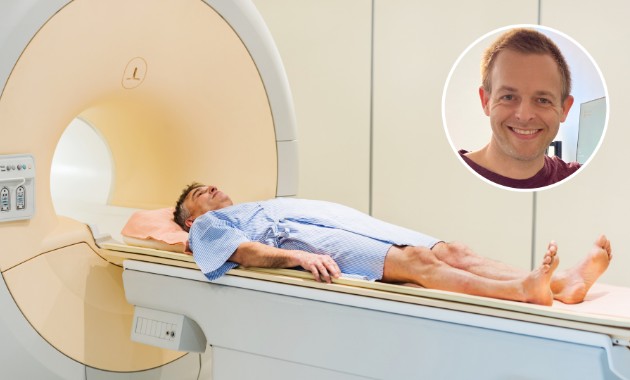- A Charles Sturt University engineering academic designed the renewed and rebuilt historic Bowtells Swing Bridge on the Six Foot Track in the NSW Blue Mountains
- The challenge in the remote location was to make the bridge as similar as possible to the original but with improved function, safety and longer design life
- The new bridge is wider, easier to use and safer than the original
A Charles Sturt University engineering academic has played a central role in the maintenance and restoration of the historic Bowtells Swing Bridge over the Cox’s River on the famous Six-Foot Track in the NSW Blue Mountains.
Associate Professor Peter Thew is a structural engineer and Senior Engineer in the Charles Sturt Gulbali Research Institute for Agriculture, Water and Environment where he leads the Institute’s engineering division.
Professor Thew designed the renewed bridge, which was constructed by Carters Engineering in a $971,849 project funded by the NSW Government.
The pedestrian bridge, which spans 80 metres over the Coxs River, is a key link in the Six Foot Track, a three-day 44 kilometre walking track from Katoomba to Jenolan Caves, which is now re-opened to bushwalkers.
In a prior role in the Charles Sturt Engineering program Professor Thew conducted annual safety inspections of the Bowtells Swing Bridge since approximately 2015 to ensure it was safe and holding up well.
In 2019, Professor Thew and his team of engineering students identified a critical level of wear on the six main cables at the bridge tower. This cable wear reached the point where the bridge had to be closed in 2022 and the cables replaced.
Professor Thew said because the bridge is heritage listed, the renewed bridge had to be as functionally similar and as close in appearance as possible to the old bridge but with improved function, safety and design life.
“However, at the same time, we had to bring the bridge to compliance with the current codes and Australian standards for bridges that required a significant increase in its load carrying capability and safety levels,” he said.
![]() Working from the original drawings and from site measurements, Professor Thew and his team analysed the existing towers and concluded that with some minor modifications they could be reused.
Working from the original drawings and from site measurements, Professor Thew and his team analysed the existing towers and concluded that with some minor modifications they could be reused.
“We eliminated the wear point of the original bridge (at the cable supports) with an easy to replace pivot pin so that this bridge should last much longer than the previous version,” Professor Thew said.
“We also built in some redundancy. For example, if any of the minor cables or floor mesh break, the bridge will still hold together safely until it can be repaired.
“Each major cable is strong enough on its own to support the full load of the bridge, and to make it easier to use and possible to wheel a bike across. We made the base a bit wider and improved the floor.”
Recent Charles Sturt Engineering alumnus Mr Damien Taylor worked on the project with Professor Thew and had significant role in the design.
“Improving the bridge’s stability was a major design challenge, while the remote location certainly presented constructability issues, putting significant constraints on what we were able to do,” Mr Taylor said.
“I was glad I studied engineering at Charles Sturt, where we learn by working on real projects from very early on in the degree, plus we get lots of industrial experience as we go.”
![]() Professor Thew said, “The Charles Sturt University engineering degree was designed in regions for regional engineers.
Professor Thew said, “The Charles Sturt University engineering degree was designed in regions for regional engineers.
“Studying engineering at the University leads to a diverse range of careers and experiences locally, as well as across Australia and even overseas, including design, management, construction and research.”
Carters Engineering in Bathurst NSW were awarded the works tender for the Public Works and Crown Lands Bowtells Swing Bridge project. This included the detailed design and fabrication of the bridge and all components, including new anchoring points, cables and supports, and project management of the installation.
Carters Engineering director and project manager Mr Josh Lewis said he is proud of their project team and the way it was able to deliver this project.
“Considering the challenging conditions of the remote location, with all materials brought in by hand, on foot, it was a pleasure to work with the dedicated Public Works, Crown Lands and Charles Sturt University teams,” he said.
Read more about the historic Bowtells Swing Bridge.






Social
Explore the world of social